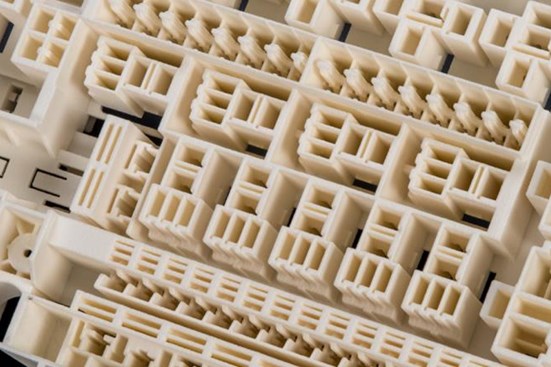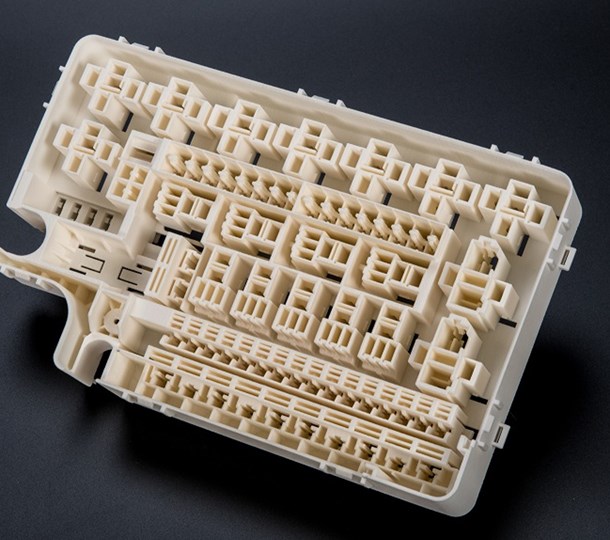Additive manufacturing (AM) or 3D printing is already enabling car makers and auto electronics manufacturers to completely rethink their design and production processes. It is now possible to produce fully functioning electronic prototypes, end-use spare parts, and small-series components without expensive injection molding techniques. 3D printing also has the potential to save on material, energy consumption and shipping costs.
Polybutylene terephthalate (PBT) is a commonly used material in traditional injection-molded electronic auto parts, thanks to its good performance under a wide range of temperatures and in moist environments. Our task here was to offer customers a material that meets their needs for 3D-printed electric and electronic car components, which can be processed for industrial production.
This material offers customers a solution that brings higher accuracy and productivity, and lower cost per part. This solution also helps customers print more parts in the same amount of time, leading to lower costs per part and increased productivity, combined with higher accuracy.
Components for automotive, industrial and power electronics must meet a wide range of stringent mechanical requirements as they affect occupant safety. These parts must withstand both short- and long-term exposure to high temperatures, ensuring there are no power breakdowns, leakages or short circuitries.
Car fuse boxes bring a particular set of material challenges, as their function is to protect and insulate a vehicle’s electrical and electronic circuits from exposure to outside elements, while also regulating the current that flows through the wiring to each component. The fuse box material must deliver electrical and mechanical properties, as well as resistance to high and low temperatures.
PBT has long been a preferred option for traditional injection-molded electronic parts. The challenge here was to find the right material for a 3D-printed car fuse box that delivered all of the required technical characteristics.
Addigy® P1210 is a PBT powder engineered specifically for 3D printing using selective laser sintering (SLS) technology. This innovation means electronic components, such as an automotive fuse box, can now be 3D-printed with the same material used in traditional manufacturing.
Combining Addigy® P1210 PBT with SLS technology, provides manufacturers a proven solution well-suited for electronic and electrical components that must meet demanding thermal exposure, dielectric and mechanical criteria.
Without the need for extensive tooling, low-volume parts and prototypes can be produced more quickly and cost-effectively than with traditional techniques. Material waste, processing and shipping costs are reduced. This is an example of how material expertise can enable the additive manufacturing revolution in electronics volume production.
Addigy® P1210 is one of the first commercially available PBT powders for selective laser sintering. The ideal solution for small series production via additive manufacturing in industrial applications such as 3D printed automotive electronics.


